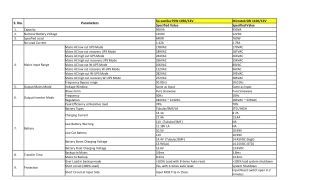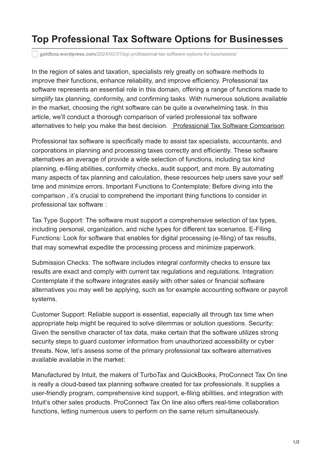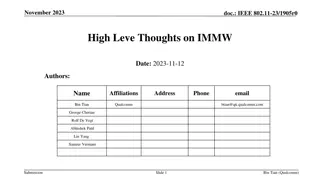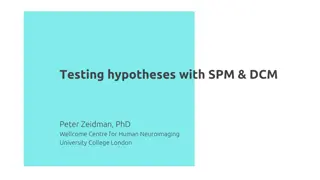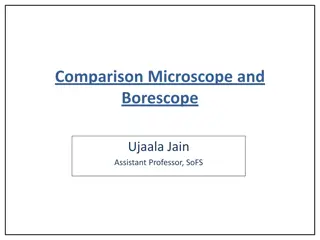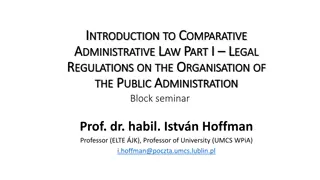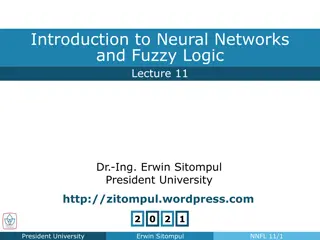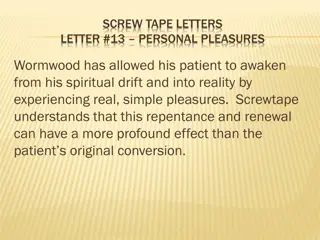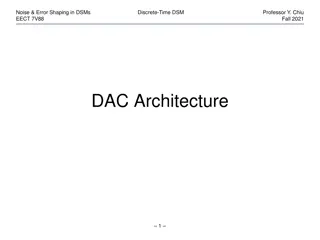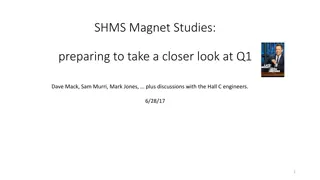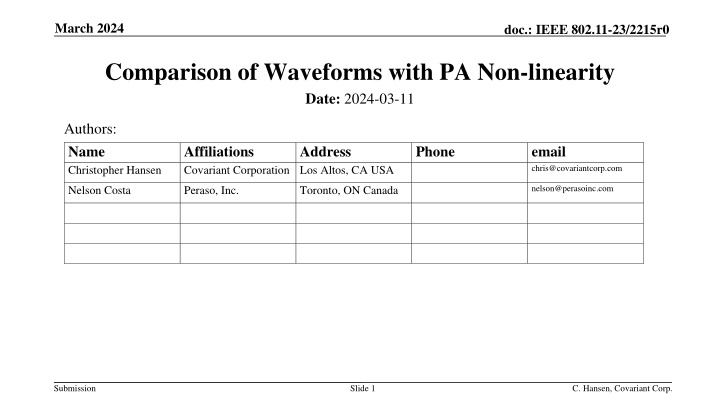
Comparison of Waveforms with PA Non-linearity in IEEE Standards Efforts
"Explore technical insights on waveform options for a new mmWave PHY in IEEE 802.11 standards, examining changes to OFDM physical layer designs for optimal performance. Review evaluation methodologies, the Rapp model for power amplifier non-linearities, and simulation results, with suggestions for future work."
Download Presentation

Please find below an Image/Link to download the presentation.
The content on the website is provided AS IS for your information and personal use only. It may not be sold, licensed, or shared on other websites without obtaining consent from the author. If you encounter any issues during the download, it is possible that the publisher has removed the file from their server.
You are allowed to download the files provided on this website for personal or commercial use, subject to the condition that they are used lawfully. All files are the property of their respective owners.
The content on the website is provided AS IS for your information and personal use only. It may not be sold, licensed, or shared on other websites without obtaining consent from the author.
E N D
Presentation Transcript
March 2024 doc.: IEEE 802.11-23/2215r0 Comparison of Waveforms with PA Non-linearity Date: 2024-03-11 Authors: Name Christopher Hansen Affiliations Covariant Corporation Los Altos, CA USA Address Phone email chris@covariantcorp.com nelson@perasoinc.com Nelson Costa Peraso, Inc. Toronto, ON Canada Submission Slide 1 C. Hansen, Covariant Corp.
March 2024 doc.: IEEE 802.11-23/2215r0 Abstract Technical input regarding different waveform options for a new mmWave PHY. Submission Slide 2 C. Hansen, Covariant Corp.
March 2024 doc.: IEEE 802.11-23/2215r0 Background The IMMW Study Group Creation Motion [1] specifies operation between 42.5 and 71 GHz and a new amendment that leverages MAC/PHY specifications in the Sub 7 GHz bands Contributions to the UHR and IMMW Study groups ([2], [3]) have suggested that simple changes to existing OFDM physical layer designs, such as increasing the clock rate and/or changing the DFT length would be sufficient to transform a PHY designed for bands below 7 GHz into a useful PHY for mmWave bands. Previous work in IEEE standards including 802.11ad, 802.11ay, 802.15.3c provides helpful guidance for the direction of this new effort Submission Slide 3 C. Hansen, Covariant Corp.
March 2024 doc.: IEEE 802.11-23/2215r0 Outline Review previous IEEE 802.15 and 802.11 standards efforts Review Evaluation Methodology from previous standards efforts Review the Rapp Model for power amplifier non-linearities Present Simulation Results for HE SU and DMG waveforms applied to the Rapp Model according to Evaluation Methodologies from previous Suggest Future Work Submission Slide 4 C. Hansen, Covariant Corp.
March 2024 doc.: IEEE 802.11-23/2215r0 IEEE 802.15c Review Published in 2009 Included 3 Alternate PHY specifications for 802.15.3 Single Carrier Mode High Speed Interface Mode (OFDM PHY) Audio / Visual Mode (OFDM Low and High Rate PHY) 2160 MHz channel bandwidths Not implemented in products Submission Slide 5 C. Hansen, Covariant Corp.
March 2024 doc.: IEEE 802.11-23/2215r0 IEEE 802.11ad Review Published in 2012 4 Physical Layers Defined Single Carrier Control PHY OFDM PHY SC PHY Low power SC PHY Control PHY and SC PHY are implemented in products that are on the market today OFDM PHY was deprecated and removed Submission Slide 6 C. Hansen, Covariant Corp.
March 2024 doc.: IEEE 802.11-23/2215r0 IEEE 802.11ay Review Published in 2021 2 Physical Layers Defined EDMG SC PHY EDMG OFDM PHY EDMG SC PHY has been implemented in products Submission Slide 7 C. Hansen, Covariant Corp.
March 2024 doc.: IEEE 802.11-23/2215r0 OFDM vs Single Carrier (1) For linear, time invariant channels, the two techniques can provide identical performance [4]: Indeed, the MMSE-DFE (single carrier) achieves the signal-to-noise radio and corresponding data rates of a multitone (OFDM) system, which is known to be able to achieve capacity. Practical implementations differ Submission Slide 8 C. Hansen, Covariant Corp.
March 2024 doc.: IEEE 802.11-23/2215r0 OFDM vs. Single Carrier (2) OFDM Single Carrier Simpler to combine with channel coding High peak-to-average ratio creates distortion in amplifiers More sensitive to phase noise DFE (Decision Feedback Equalizer) can be difficult to combine with channel coding Low peak-to-average ratio minimizes distortion Less sensitive to phase noise Submission Slide 9 C. Hansen, Covariant Corp.
March 2024 doc.: IEEE 802.11-23/2215r0 802.11ad SC PHY Design For the 802.11ad PHY design, there were three key observations The impulse response of indoor mmWave channels would tend to be short compared to 2.4 and 5 GHz channels High speed omni-directional mmWave communication in not possible Large antenna gains means narrow beamwidths, which reduces the number of strong reflected paths and reduces the resulting channel impulse response length MMSE-DFE is not necessary; a linear equalizer would work well Power amplifiers are less efficient at 60 GHz and would need to operate closer to saturation than 2.4 and 5 GHz systems Phase noise will be much higher at 60 GHz All these factors favor Single Carrier over OFDM Submission Slide 10 C. Hansen, Covariant Corp.
March 2024 doc.: IEEE 802.11-23/2215r0 TGad and TGay Evaluation Methodology Both task groups used the same power amplifier non- linearity model Model acknowledges that a greater backoff is required for OFDM compared to single carrier Submission Slide 11 C. Hansen, Covariant Corp.
March 2024 doc.: IEEE 802.11-23/2215r0 Comparing Waveforms with the Rapp Model IEEE 802.11ax HE SU PPDU MCS 4 (16 QAM rate LDPC code) 2x996 tone RU - 160 MHz mode 1 Spatial stream 3.2 us GI Target EVM -19 dB (See 802.11ax-2021 p.636) IEEE 802.11ad DMG SC PPDU MCS 12 (16 QAM rate LDPC code) Target EVM -21 (See 802.11-2020 p.2992) Results computed with Matlab WLAN Toolbox Submission Slide 12 C. Hansen, Covariant Corp.
March 2024 doc.: IEEE 802.11-23/2215r0 PSD Comparison Even with a more relaxed EVM specification, the OFDM waveform power level is 2.5 dB lower Submission Slide 13 C. Hansen, Covariant Corp.
March 2024 doc.: IEEE 802.11-23/2215r0 Gain Compression Impact Peak and average power levels are shown on top of the Rapp Model amplitude response DMG Single carrier waveform can transmit 2.5 dB more power at a lower EVM Submission Slide 14 C. Hansen, Covariant Corp.
March 2024 doc.: IEEE 802.11-23/2215r0 PER Performance 4096 byte PSDU comparison in AWGN between the HE SU Waveform At 1% PER, the DMG SC PHY requires 1.6 dB lower SNR DMG SC has a net 4.1 dB improvement over the 802.11ax PHY Submission Slide 15 C. Hansen, Covariant Corp.
March 2024 doc.: IEEE 802.11-23/2215r0 Summary Power amplifier nonlinearity will limit the usefulness of any OFDM PHY in the mmWave bands Results here show a gap of more than 4 dB using existing IEEE 802.11 PHY specifications and evaluation criteria The gap is most likely even greater when realistic phase noise models are added The option to develop a single carrier PHY is a necessary part of any task group for IMMW Submission Slide 16 C. Hansen, Covariant Corp.
March 2024 doc.: IEEE 802.11-23/2215r0 References 1. Integrated mmWave Study Group Creation, IEEE 802.11-23/0481r2 2. Considerations on PHY Designs for mmWave Band, IEEE 802.11- 22/1872r0 3. Integrated mmWave Design Considerations, IEEE 802.11-23/1819r1 4. MMSE Decision-Feedback Equalizers and Coding Part II: Coding Results , J. Cioffi et al, IEEE Trans. Comm, Vol 43, No. 10, Oct. 1995, p. 2595-2604 5. TGay Evaluation Methodology, IEEE 802.11-15/0866r2 Submission Slide 17 C. Hansen, Covariant Corp.

